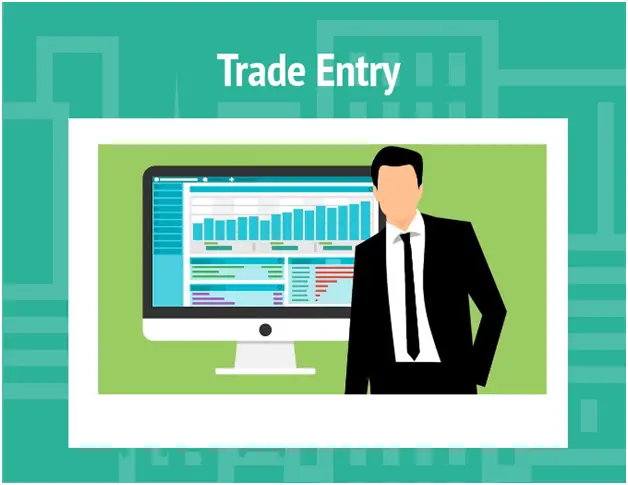“I have no control over whether or not a trade will be profitable. My job is to enter orders. Nothing more, nothing less!”
As a swing trader who has experienced extreme highs and lows brought about my own actions, there are two main ideas that I take away from his quote:
- Focus on all of the areas that you can control as a trader.
- Realize that when you are in an active trade, though you have given up control, you have to trust your methods, system and strategy. If you have done your homework and focused like a laser on what you can control, over time you will come out ahead.
 Success as a trader depends on concentrating on the areas that you can control. What makes trading so fascinating (and frustrating) is how complex it is. There are so many moving parts…so much that can go wrong that it doesn’t take much for any one area to sabotage your trading.
Success as a trader depends on concentrating on the areas that you can control. What makes trading so fascinating (and frustrating) is how complex it is. There are so many moving parts…so much that can go wrong that it doesn’t take much for any one area to sabotage your trading.
There is a fine line between winning and losing, so the key is to look at the areas that you can control and make sure you fix the leaks that might be sinking your ship.
As a trader, what are areas that you can control?
Take the time to figure out your overall trading strategy
Figure out your personality…what makes you tick? Take into account potential blind spots or weaknesses that you might have. For example, what trading strategies would you feel most comfortable with?:
- Scalping small amounts?
- Buying breakouts?
- Pullbacks?
- Trend following?
- Buying Gaps?
- Fading Gaps?
- etc, etc…
Does your trading strategy actually fit your personality?
Document your trading plan
Take the time to document a trading plan. Write it down. It could be extremely general or very detailed, but the more detail the better.
Once you’ve done that, remember that it’s not set in stone either. If you notice that certain areas need to be tweaked…make changes. You could think of it as a living, breathing document.
Also, it’s obviously important to actually follow your trading plan! The last line item in my trading plan has always been: “Follow your trading plan and adjust as needed”
Set your risk levels.
You can spend time in advance figuring out how much of your portfolio you can you afford to risk on a particular trade. A good part of this might depend on how much of a risk tolerance you have.
A general rule is to risk no more than 1-2% per trade.
From my experience, risk management is probably THE most important part to trading. Your goal should be to not lose money. If you have a trading strategy and plan that has a positive overall expectancy, the profits will take care of themselves.
Take control and spend the time to figure out a risk strategy that works for you.
Create a trading routine and follow it
Create a consistent routine to follow on a weekly and daily basis.
As a swing trader, my typical day consists of:
- Morning (before the market open) – Review active trades and evaluate whether any adjustments are needed, such as moving up sell stops, whether a trade is performing as expected, etc.
- Morning (before market open) – Decide on any positions to enter that looked the most promising from the prior afternoon.
- Trading day – Enter or exit any trades
- Afternoon (after market closes) – Review new results from stock filters and determine ideal trades with the most potential. Short list ideal trading candidates, analyze and annotate their charts, calculate risk vs. rewards for each, entry and exit points, positions sizing, etc.
On the weekends (usually early in the morning) I like to learn and read. I come up with new trading ideas and fine tune and adjust my methods as I get better.
Pre-trade
For each potential trade, analyze the risk vs. reward.
If you determine that your stop-loss on a stock trade is going to be .16 cents below your purchase price, and your realistic exit point might be .80 cents above your purchase price, your risk to reward is 5 (.80 divided by .16). Make sure that you are taking trades that have the best risk vs. reward that fit within your trading system.
Calculate your position sizing for each trade. For example: If you determine that you are going to risk no more than 2% of a $20,000 account on any one trade do the following:
- You can afford to lose $400 on a trade ($20,000 x .02)
- Calculate where your stop-loss would be and the amount per share you would lose…let’s say it’s 16 cents.
- Divide the 16 cents into the $400. For this trade, you can purchase 2,500 shares with that stop-loss.
The entry – Put in your order.
As a swing trader, once I know that I’m going to enter a trade, I follow a process to “stalk the trade” to find a good purchase where I think the price will turn and pivot higher. I do that by viewing the stock in one timeframe above and below the daily timeframe that I chart.
Everyone should have a method that works best for them, so create a process that you follow every time. Once I’m in the trade, I set my sell-stop. Some traders use a mental stop, which is fine if you can make sure to abide by it.
At the point of entry, you are like Peter Brandt. You’ve done all of the leg work. You’ve controlled everything that you can. Now you just need to put in your order and jump on board your trade.
At this point, you are completely out of what you can control.
During the trade
At this point you have to trust your method…your process. Know that you’ve done the best that you can to set yourself up for success.
Even if that trade is a loser, you can feel good knowing that you’ve done everything right because you followed your process and done your best in every aspect that you can control. Losing is a part of trading.
You have to trust your plan, and take comfort in the fact that you have a system that has been backtested and has worked for you over the long-term.
Even though you are at the mercy of the market, you can still control your emotions. As a swing trader, I don’t need to monitor every single tick.
Resist the urge to find reasons for or against staying in the trade. For example, I would regularly check in on what everyone else was saying about my active trade on Stocktwits. I was trying to find any opinions that justified my current trade to make myself feel good about myself.
For me, it was an emotional roller-coaster that I learned the hard way not to participate in. I’ve learned to look at my current trade as one of thousands of future trades. I might be out of control for my current trades but I know that over time, I make money when I stick to my system.
At some point, you can take control again and exit the trade. Whether your initial sell-stop loss was triggered, or you exited at a profit, you can still focus on one last area, post-trade analysis.
After the trade
I used to sweep my losers under the rug, out of sight, out of mind.
The winners though, I had no problem going back and looking at the chart, patting myself on the back for how smart I was!
But by analyzing every single trade and looking at all of the characteristics of the setup and what your thought process was before entering…that is invaluable. Examining your losers is probably more important than reviewing your winners.
This way you can learn from your mistakes and adjust your strategies. To help with this, I created a trade journal, (spreadsheet) with my pre-trade thoughts, my anticipated risk vs. reward, a link to the chart with my annotations, and my notes with how the trade turned out, along with why I thought the trade became a winner or loser.
Not only has this helped fine tune what I look for in pre-trade setups, but more importantly, I have found that I was trying to “force” trades to work for me.
For example:
- I would set support and resistance lines at points that didn’t make total sense
- My risk vs reward ratio was sweetened by setting stop losses too close to the current price and my expected exit was unrealistically high.
Key Takeaways:
Pulling the trigger on a trade is the easy part…just the tip of the iceberg. Once you are in a trade, you are at the mercy of the market. You gave up control.
But the real key is concentrating on what you can control. Make sure to eliminate areas that can sabotage your success as a trader.
Do everything possible to focus on what you have direct control over. Look at your processes. Setup a trading plan. Backtest. Create a risk management strategy. Make sure your positions are sized correctly. Focus on your mindset.
Like Peter Brandt, accept the fact that you can’t control whether a trade is going to be profitable…but make sure to concentrate on the areas that you can control and then trust that over time, you can come out ahead over the long haul.
You can see more articles from Glenn Drewes on his swing trading blog at Greedygoblintrader.com
